Porbeagle Shark

Species Details
Lamna Nasus
Lamnidae
Lamniformes
Offshore, Continental Shelves, Slopes, Inshore
300 - 550 lbs.
60" - 140"
Porbeagle (Lamna nasus) Fish Description
The Porbeagle Shark belongs to the mackerel shark species, this includes the great white shark and salmon shark. It has a stout body and is shaped like a torpedo. It’s blue-grey in color and has a white belly underside. To easily distinguish a porbeagle, check the rear side of its first dorsal fin, you’d find a white patch that is unique to the fish.
They’re mainly found in cold the salt waters of the North Pacific, North Atlantic oceans, and the Southern Hemisphere. They’re known to be opportunistic hunters and a nuisance for some fishermen because they sometimes steal baits. It predominantly eats small to medium-sized bony fish such as bony fish and
Interesting Facts About the Porbeagle
- The Porbeagle has a special blood vessel called, rete mirabile, which it uses to keep its body warm from the cold waters where it lives.
- Porbeagles are considered a delicacy around the world, especially in Asia.
- No one knows exactly how the name porbeagle came to be for this fish. Some say the name came from its dog-like mentality to fight when caught, hence the name beagle.
Porbeagle Size and Speed
The porbeagle is a large fish. The biggest porbeagle shark is 11.7 feet and its average size is 4.9 to 6.6 feet. The average weight of the porbeagle is 300 lbs, and the heaviest caught was 550 lbs.
No one knows the exact speed of the porbeagle shark, but scientists assume its speed is as close as its close relative, the mako shark, with speeds reaching up to 20 mph.
Distribution and Habitat of the Porbeagle Shark
The porbeagle prefers cold waters in the North Pacific with temperatures of 39.2° to 60.8°F. They mostly stay in the upper pelagic zone with depths of 650 feet (but sometimes they go to depths of 2600 feet). In the U.S., it’s range is from the coasts of New Jersey to South Carolina of the northwestern Atlantic.
They are a migratory species that travel in a longitudinal motion in the northern Atlantic Ocean, from South Carolina to the waters of Greenland. During the day, they’re in the deeper waters and at night they go to more shallow levels. A good time to catch them in the U.S. is during summer, where they are more seen on continental shelves, slopes, and close to inshore. The rest of the seasons, they stay more in the offshore banks.
Porbeagle Fishing Techniques
Porbeagles are known for their power and endurance which is why they are a popular game fish among anglers. If you happen to catch one, you may even see them leaping out of the water.
As game fish, they often catch through kayak fishing and boat fishing. They can be pretty shy but pouring some chum or oily innards on the side of the boat will help you attract the shark. Fishing porbeagles is pretty simple, just pick the right spot to catch your shark and place your line down up to 30-90 feet (sometimes 300 feet or close to the bottom), then wait for the fish to take the bait.
There have been cases where anglers caught porbeagles with a fly fishing rod. In one instance, an angler named Dr. Fahey used a 14 weight rod (though the broke in half ) with a specialized hook and line. The fight almost took 2 hours but Dr. Fahey was able to catch the massive fish 198-pound shark. So you can definitely fly fish this shark if you want to go for the extreme.
For the usual, the recommended gears are 7-10 foot rod with a 200-400 lb monoline with a 10 lb weak link to help you get to your desired depths. The heavy line is highly recommended since the skin of this shark is so abrasive that it might break the line during the fight.
A full mackerel is a common bait for porbeagles since it’s their favorite food. Other good baits are squids, herrings, cods, and pollocks. A good spot for the hook is 10/0 to 12/0 for a large fish like the porbeagle.







